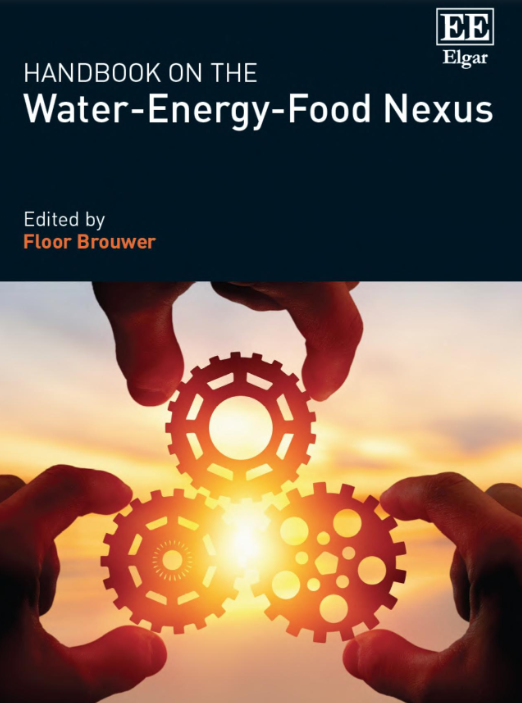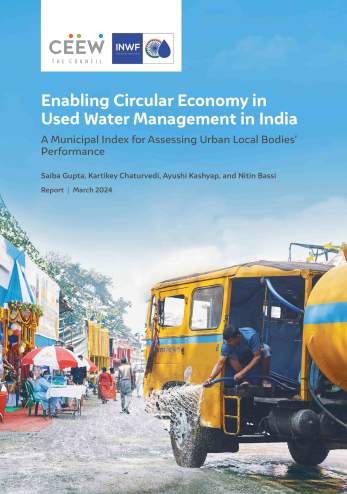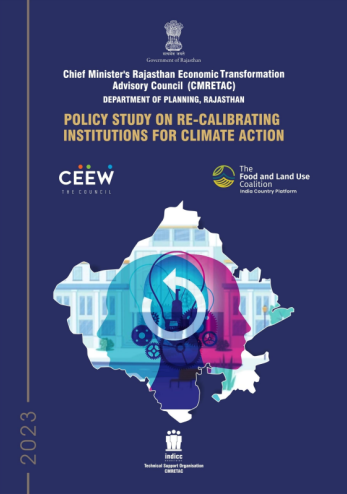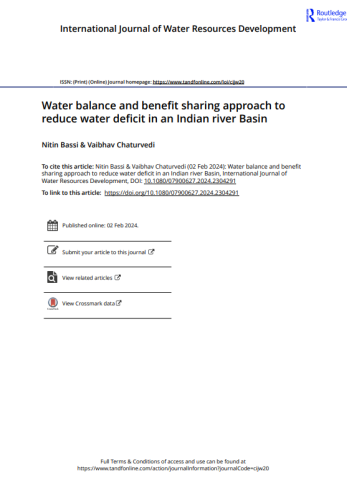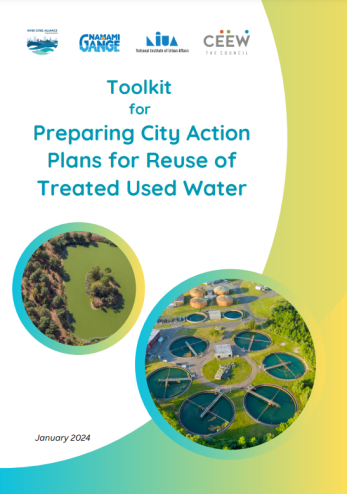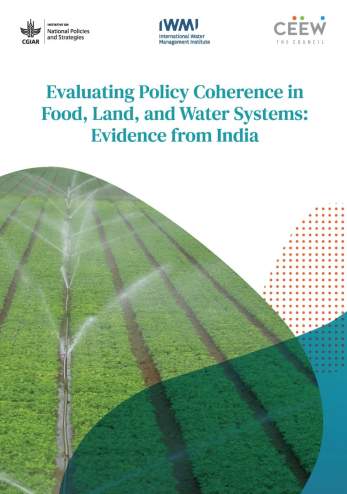Other Publications
Exploring Policy Coherence in India’s Electricity-Water Nexus
Kangkanika Neog and Vaibhav Chaturvedi
August 2022 | Sustainable Water
Suggested citation: Neog, K., Chaturvedi, V, (2022). Exploring Policy Coherence in India’s Electricity-Water Nexus. In: Brouwer, F. (ed) Handbook on the Water-Energy-Food Nexus. Edward Elgar Publishing, Cheltenham & Northampton.
Overview
This chapter applies a nexus framework to investigate the existing coherence between policies for electricity production and related water use in India. The governance for nexus approach calls for coherence among interdependent sectors like electricity and water. It focuses on policy coherence, i.e., the systematic identification and management of trade-offs, conflicts and synergies between policies across sectors. Through the framework, the chapter examines the interlinkages between 12 policy solutions across eight policy objectives existing in India's electricity and water sectors. It finds that the majority of the interactions are positive (indivisible, reinforcing, enabling) indicating that progress on most of the objectives affects progress on the other objectives positively. However, some interactions are also constraining, counteracting and cancelling. The chapter highlights that among all the policy solutions examined, the nexus impact of policies promoting solar and wind is most positive and beneficial in terms of its nexus implications.
Key Highlights
- Water and energy systems are highly interdependent. While water is used in all phases of energy production and electricity generation, energy is required to extract, convey and deliver water of appropriate quality for a variety of human uses such as irrigation, domestic use and industrial use. The strong nexus between these resources is increasingly being recognized.
- Freshwater is a major source of water for electricity generation. The estimated total water withdrawals and total water consumption for electricity generation stand at 34 bcm and 4 bcm in 2010, respectively, with most of the withdrawals from coal power plants. In the absence of policies to curb water use, average water withdrawals could grow ninefold to 224–356 bcm by 2050, while average water consumption could increase five-fold to 18–23 bcm.
- Using such a policy framework, the chapter examines the interlinkages between eight different policy objectives – five in the energy sector and three in the water sector. The policy solutions are the adoption of solar and wind power, large hydro, UMPP, nuclear power plants and bioenergy, super-critical technology, dry-cooling and water-efficient cooling towers, wastewater use for power plants and use of seawater along with land acquisition based on water availability.
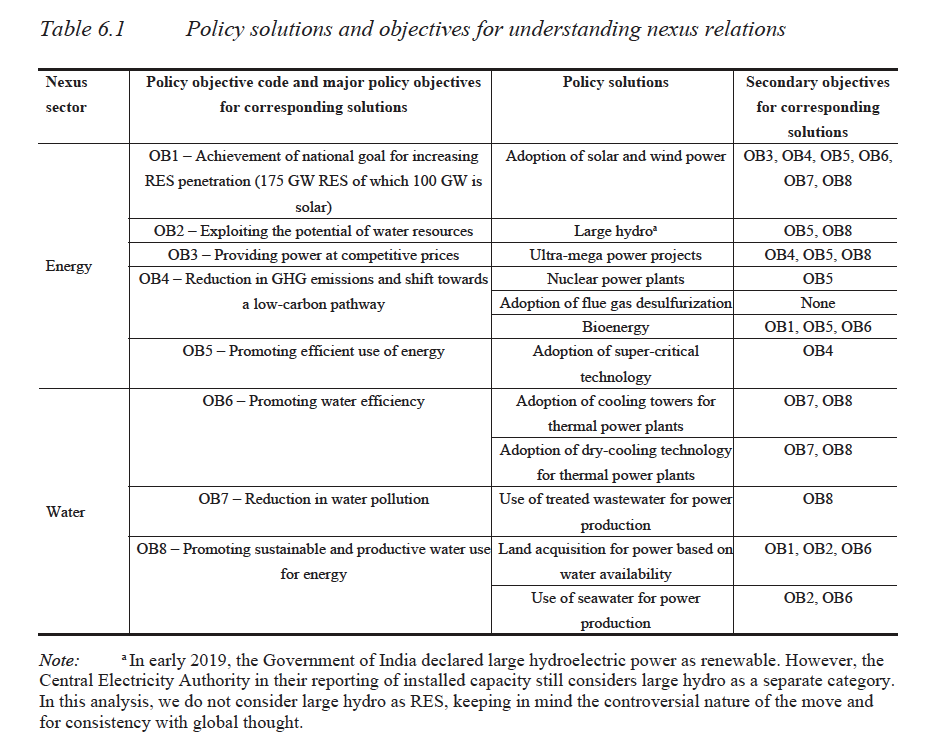
- The various policy objectives that these solutions aim to achieve range from the diversification of energy mix to a reduction in GHG emissions to promoting sustainable and productive uses of water.
- In order to study the interactions between each of these policy objectives, the chapter presents a cross-matrix where each policy objective is mapped against each objective and scores are assigned.
- The chapter finds that the majority of the interactions are positive (indivisible, reinforcing, enabling), indicating that progress on most of the objectives affects progress on the other objectives positively. However, some interactions are also constraining, counteracting and cancelling. The nexus impact of policies promoting solar and wind is most positive, while that of hydropower is negative. Among the objectives that are influenced the most by other objectives, promoting sustainable and productive water use for energy is most positively affected by the other objectives.
Key Recommendations
- Include nexus implications in policy more consciously to avert crisis in the energy and water sector. Even though India has not consciously and rigorously adopted the nexus approach for their water and electricity sector, there has been some progress with regard to this. The chapter elucidates that the adoption of for example renewable energy has a positive influence on both the energy and water sectors.
- Deploy this and other similar frameworks to get a sense of trade-offs and synergies and the magnitudes of the same across key policy solutions and objectives. This chapter presents the framework to elucidate how one can approach the various elements of the nexus framing to think deeply about the various nexus elements and their interlinkages, and ultimately achieve the desired policy coherence required to attain the SDGs.
"Challenges in the implementation of water-energy-food nexus implementation lie in governance issues including a lack of policy coherence, institutional coordination and varied stakeholder needs at different levels."




